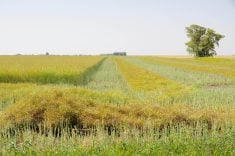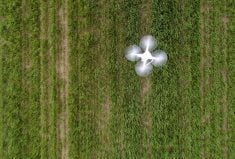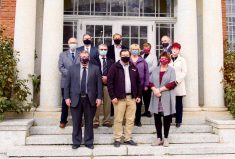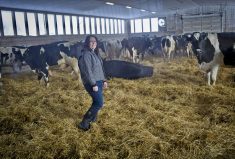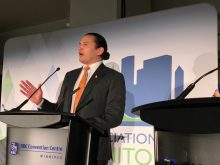Agriculture and Agri-Food Canada (AAFC) should develop a report card system to help farmers assess their environmental footprint.
That was one idea floated during a robust discussion following an AAFC presentation on the in-development Sustainable Agriculture Strategy. AAFC representatives reported on the federal strategy’s progress during the Keystone Agricultural Producers (KAP) spring advisory council meeting on April 14.
Why it matters: Ongoing efforts by AAFC to reduce climate impacts from agriculture will affect how farms operate in the future.
Read Also
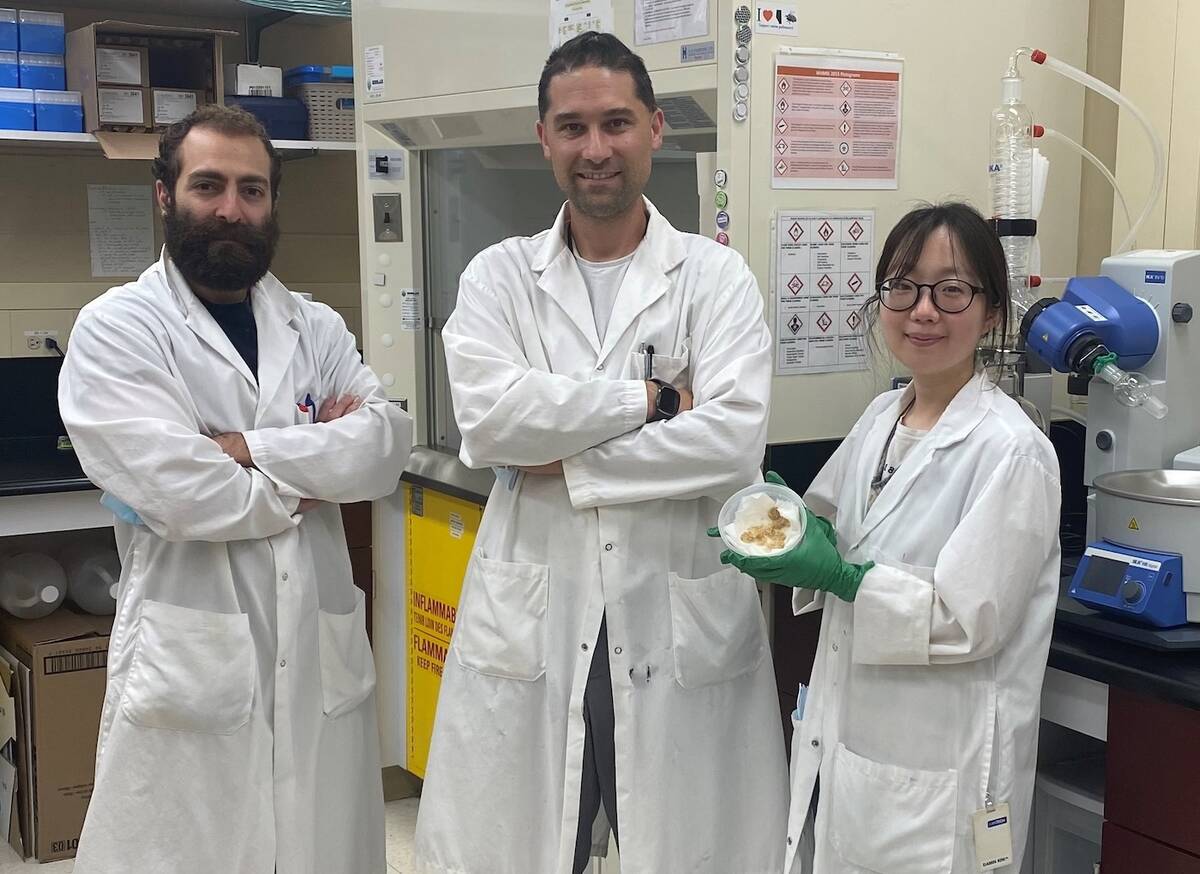
Nanotechnology used to develop genetic pest control
Researchers from Agriculture and Agri-Food Canada are working with nanotechnology and RNA to develop new pest insect control methods as an alternative to chemical spray on crops.
The idea was brought up by KAP district director Chuck Fossay, who said he envisioned some kind of merit-demerit system that evaluated activities with negative impacts, like increasing use of nitrogen fertilizers, against positive activities, like using urea inhibitors or planting legumes.
Fossay’s suggestion was well received by those in attendance, but fellow KAP member Glen Young advised caution.
“Just make sure there are no penalties attached for a low score,” he said.
The Sustainable Agriculture Strategy will be a long-term plan from AAFC aimed at prioritizing environmental and climate issues in the ag sector.
In December 2022, the department opened consultation with producers and other stakeholders on how to best collaborate on the strategy’s development. KAP submitted a series of written recommendations as part of that process.
Consultations officially ended March 31, although AAFC later extended the window to allow KAP members to engage with the department during the spring advisory council meeting.
“It was an extension of (AAFC’s) in-person producer consultation sessions they were hosting across Canada, part of their strategy to have those direct consultations with producers,” said KAP communications manager Colin Hornby.
“It was a combination of us wanting our membership to have an opportunity for participation if they missed any of these sessions, as well as a willingness from AAFC to have some smaller regional sessions, too.”
The discussion began with a presentation by Laila Smith, a senior policy analyst with AAFC’s Climate Policy and Partnership Division.
“Today’s session is all about hearing from you,” she said. “It’s about the successes and challenges of adopting sustainable practices on your farm and, ultimately, what you would like to see in a national strategy guiding the agricultural sector towards a more sustainable future.”
Discussion was structured around a list of questions posed by AAFC to KAP members.
Attendees were asked about new practices or innovations they had implemented in the last five years to “be more resilient to climate change, reduce emissions and/or regenerate your natural resources, such as soil, water and biodiversity.”
Farmers noted practices like soil testing, cover crops, rotational grazing, urea inhibitors, more use of nitrogen-fixing crops, data collection and high-resolution agriculture.
The discussion almost inevitably turned to the added price tag.
“A lot of these practices come at a cost to the farmers and we need help to deal with it, whether it’s changes in equipment or just making those changes in practices over time,” Fossay said.
The On-Farm Climate Action Program was mentioned several times as a good example of what government can do to help implement these practices. Announced in 2021, the program offers funds to organizations, public corporations and other administering groups who then distribute money for farm-level beneficial management projects.
Hillary Eatock, another AAFC senior policy analyst, said she was pleased with the awareness of climate program funding and noted there is more available through the new Sustainable Canadian Agricultural Partnership, which took effect April 1.
“What I’m hearing today is quite aligned with what we’ve been hearing throughout the consultation, period,” Eatock said. “And that is, really, it needs to make economic sense.”
The next question was about barriers to adopting these practices.
“The biggest barriers for producers are economic,” said KAP past-president Bill Campbell. “If we are going to deal with reducing greenhouse gas emissions, I think there needs to be better financial support and proof of economic return to producers.”
Knowledge gaps and lack of technical ability to properly use new tools were also mentioned.
KAP president Jill Verwey noted the limited cell phone and broadband connectivity often experienced on remote farms.
“I think we’re a long way from having that access available consistently across the province,” she said.
Verwey said the federal government should avoid a one-size-fits-all approach when creating policy.
“We have to look at what’s best for what region,” she said.
Another board member, Carter McKinney, said everyone understands the benefits of adding legumes to a rotation to reduce the need for added nitrogen, but those crops can come with marketing difficulties.
“If we try and convince everybody in the region to grow peas, then (buyers) will be flooded, and there’s no market for me to sell them, and I start having to look three, four or five hours away just to sell my product,” he said.
A third question, which launched the proposal of an environmental report card, asked what type of federal support would be helpful to promote chosen practices. That discussion also raised the notion of policies that recognize the diversity of conditions from farm to farm. Trade strategies that benefit farmers in Canada were also discussed.
A final question dealt with data collection challenges. There is often a disconnect between the tools available to farmers and their ability to access those tools, it was noted.
“There’s great precision equipment out there on brand new tractors and brand new seeders where you can have everything talk to each other, and it’ll pop up on your computer,” Verwey said. “You can do some great analysis from that aspect, but not every farm is at that stage.”
AAFC has said it will release a report outlining stakeholder feedback received throughout the consultation in coming weeks.




